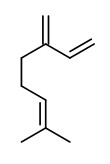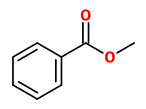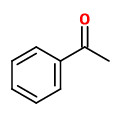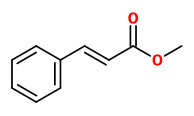Antirrhinum majus L. - Plantaginaceae - (common) snapdragon, (Großes) Löwenmaul, Garten-Löwenmaul, Löwenmäulchen
Perennial herb, up to 1m tall, native to the Mediterranean, naturalized and cultivated elsewhere; leaves broadly lanceolate; flowers pink to purple (wild types), also white, yellow, orange, red (cultivars grown as ornamental).
„Headspace analysis in combination with gas chromatography-mass spectrometry (GC-MS) of volatiles emitted from
flowers of 37 different Antirrhinum cultivars revealed that snapdragon flower scent is dominated by myrcene, trans-beta-ocimene, and methyl benzoate. Methyl benzoate is the most abundant scent compound detected in the majority of snapdragon varieties.“ Production of volatile compounds was: myrcene 7.7µg/flower/24hr (8% rel.amount), trans-beta-ocimene 26µg/flower/24hr (27%), methyl benzoate 56µg/flower/24hr (59%).
[Developmental regulation of methyl benzoate biosynthesis and emission in snapdragon flowers., Dudareva, N., Murfitt, L.M., Mann, C.J., Gorenstein, N., Kolosova, N., Kish, C.M., Wood, K., The Plant Cell Online, Vol.12(6), 2000, 949-961]
http://www.plantcell.org/content/12/6/949.full.pdf+html
 myrcene |  E-β-ocimene |  linalool |  methyl benzoate |  acetophenone |  (E)-methyl cinnamate |
„Unopened flowers (buds) and 1-day-old flowers released little, if any, detectable myrcene and (E)-β-ocimene… Monoterpene emission increased strongly on the second day after anthesis [50 and 39% of the maximum peak levels for myrcene and (E)-β-ocimene, respectively]. Emission of myrcene peaked on days 5 to 7 and remained relatively high for the next 2 to 3 days, whereas emission of (E)-β-ocimene peaked sharply on days 6 to 7 and declined gradually thereafter. Although the emission of (E)-β-ocimene by snapdragon flowers was four times higher than that of myrcene, with maximum levels at 31.9 and 8.3 μg per flower per 24 h on day 6 after anthesis, respectively, there was no difference in the emission of these monoterpenes in old (11- and 12-day-old) flowers“
[(E)-β-ocimene and myrcene synthase genes of floral scent biosynthesis in snapdragon: function and expression of three terpene synthase genes of a new terpene synthase subfamily., Dudareva, N., Martin, D., Kish, C.M., Kolosova, N., Gorenstein, N., Fäldt, J., Bohlmann, J., The Plant Cell, 15(5), 2003, 1227-1241]
„Floral scent is used by pollinators during foraging to identify and discriminate among flowers. The ability to discriminate among scents may depend on both scent intensity and the ratios of the concentrations of the volatile compounds of a complex mixture rather than on the presence of a few compounds. We used four scent-emitting cultivars of snapdragon (Antirrhinum majus) to test this hypothesis by examining the ability of honeybees to differentiate among their scents. Each cultivar produced three monoterpenes (myrcene, E-β-ocimene, and linalool) and five phenylpropanoids (methylbenzoate, acetophenone, dimethoxytoluene, cis-methylcinnamate, and trans-methylcinnamate). Cultivars were reliably classified by their scents in a canonical discriminant analysis. Honeybees were unable to discriminate among the scents of flowers of the same cultivar in our assay. The ability of honeybees to discriminate among the scents of different cultivars was a function of the intensity of the floral scent.“
[Intensity and the ratios of compounds in the scent of snapdragon flowers affect scent discrimination by honeybees (Apis mellifera)., Wright, G.A., Lutmerding, A., Dudareva, N., Smith, B.H., Journal of Comparative Physiology A, Vol.191(2), 2005, 105-114]
http://www.ncbi.nlm.nih.gov/pmc/articles/PMC153728/
The main components of the flower scent of A.majus were methyl benzoate, acetophenone, methyl cinnamate, β-ocimene, and myrcene. Minor constituents were benzaldehyde, 2'-hydroxyacetophenone, 3,5-dimethoxytoluene, α-farnesene, cinnamyl alcohol, and 3-octanol.
[Weiss, Julia, et al. „Phenotypic space and variation of floral scent profiles during late flower development in Antirrhinum.“ Frontiers in plant science 7 (2016).] http://journal.frontiersin.org/article/10.3389/fpls.2016.01903/full

Thomé, O.W., Flora von Deutschland Österreich und der Schweiz, Tafeln, vol. 4: t. 497 (1885)
http://plantgenera.org/species.php?id_species=73347
Antirrhinum majus; author: Rolf Marschner (2010),
www.botanische-spaziergaenge.at
